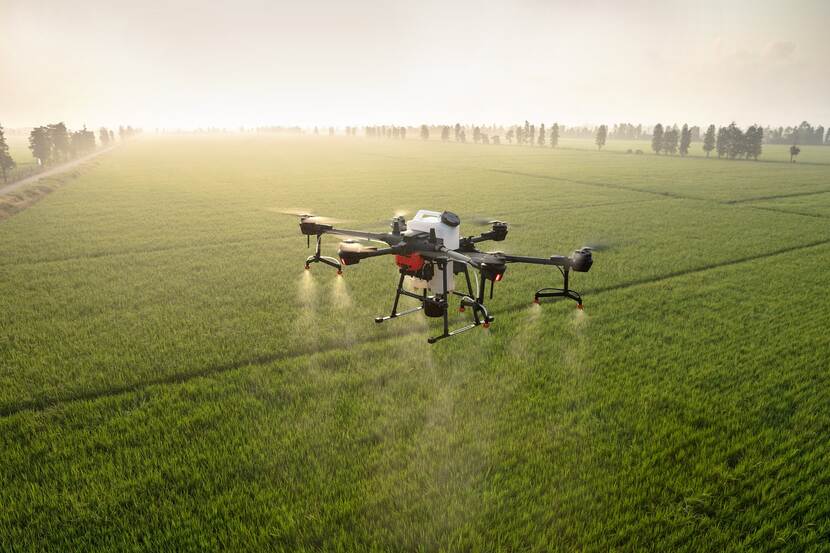Hungary: Quick sectoral statistics – Digital agriculture & precision farming
The new ten-year “agro census” shows that digitalization is a new trend – And it’s gaining traction.

Robots cruising in the air over green fields, talking with satellites, observing the crops with their sensors, and then sending everything through the cloud to a smartphone so that a farmer can scroll through all of it while sipping coffee – If anyone tells me that they don’t find that absolutely exciting and science fiction-y, I will call them a liar.
But that is just a matter of personal taste for cool gadgets. If they tell me however that that’s not an important avenue of development full of new opportunities for agriculture, then I can say that they’re really, factually, wrong. Most Dutch farmers will probably agree with me, and the figures show that more and more Hungarian farmers would also.
Agro digitalization, and the use of precision agriculture technologies and methods are still in their infancy in Hungary. However, there is a positive trend of growing consciousness, curiosity, and a rising demand for adaptation. That’s what we can learn from the preliminary figures of the latest “agricultural census” done by Hungary’s Central Statistical Office (KSH). This massive study is undertaken once every ten years in order for the statistical bureau to be able to track the development of Hungary’s agricultural sectors by decade.
The latest installment used data from the period between 2010 and 2020. The full study and detailed results will be published later this year, but the available preliminary figures can already give us a pretty solid idea of how digitalization is progressing in Hungary’s agro industries. In a nutshell: Digital agriculture is still not very widespread, but the numbers are increasing, and there are interesting windows of opportunity for spreading new technologies.
The usage of ICT devices
The following charts show how many farmers rely on digital solutions in a general sense in their businesses. Unsurprisingly, the breakdown by age groups show that younger generations rely more on smart devices in their work. Going into speculation, the relatively low level of adaptation to digital solutions might be explained by the fact that agricultural industries have a higher average age – Not just in Hungary, but generally, in the rest of Europe as well.


Looking at the breakdown by age group, it’s clear that the majority of Generation X, Millenial and Gen Z farmers rely on digital solutions at some level, but even one fifth of the 65+ group uses online banking. So what’s the situation with specialized agricultural technologies?
Precision agriculture tech usage
Plant health assessment and self-driving machines are the leading precision tech applications that Hungarian farmers use. Although the percentage is still low (under 6%), this does not necessarily mean that there isn’t a higher demand for precision applications.


When answering why they do not use precision devices in their businesses, it is clear that the majority of farmers still believe that they do not need them. However, a considerable number of producers (over 20 thousand people), listed the lack of information as the main reason for not deciding to adopt these technologies on their farms, which presents an opportunity for the potential expansion of new technologies into this market. Thousands of farmers replied that the main reason was the incompatibility of their existing machinery, or the high price of new technologies and the lack of available consultation services, which shows that there is in fact a potential in the market for digital agro technologies.
The main sources of sectoral knowledge and information
Precision agriculture, as well as the usage of digital agro technologies, might be more costly than traditional agricultural practices, but the transitioning and later utilization is also more knowledge-intensive. Possibly as a good precursor to the future adaptation of new technological trends, there is a clear sign that younger generations of farmers are much more open to employing the services of professional consultancies.
Meanwhile, it is also clear that farmers’ levels of education has an influence on where they get their news and sectoral knowledge.


The figures show that regional extension agronomists are by far the most popular information sources in the rural scene. However, while lower-educated producers tend to mainly trust in the knowledge of their colleagues and the media, higher-educated farmers place more trust in companies in the sector and professional consultants. As the previous graphs show that the second-most-likely cause fora farmer not deciding to go with precision technologies is a lack of information, addressing young higher-educated producers can be an entry point for new companies and new tech to enter the Hungarian market.
Naturally, as in this quick overview, I only focused on the preliminary figures from the digitalization chapter of the census, the full picture drawn by the final results later in the year will probably be more complex. But arguably, while the transitioning of agro digitalization is still in its early stages in Hungary’s agricultural sectors, the above-mentioned trends present clear windows of opportunity for the future adaptation of new technologies.
Wait, there’s more!
Before you go - the Budapest-Belgrade team brings you curated newsflashes every Friday afternoon. These are quick, digestible, to the point briefings about all the latest developments in Serbian and Hungarian agro sectors.
Today we bring you:

In this week’s Hungary Newsflash you can read about Avian influenza updates, spring crop figures, animal welfare news, a precision agriculture grant scheme, acacia honey troubles, new subsidies, meat sector investments and new drought-resistant biotech research

In the latest Serbia Newsflash you can find out more about horticulture news, trade figures, the effects of COVID-19 on vegetable production, food price inflation, the success of Serbian SMEs and the formation of the united Western Balkans Six cooperation in international investments.